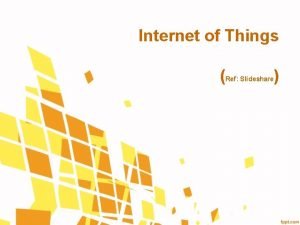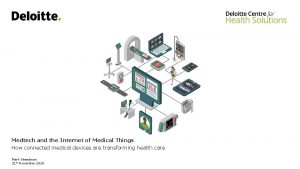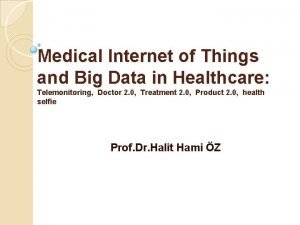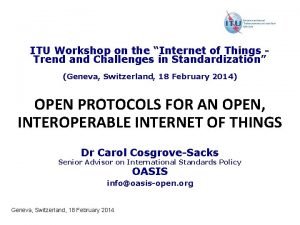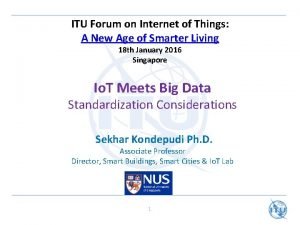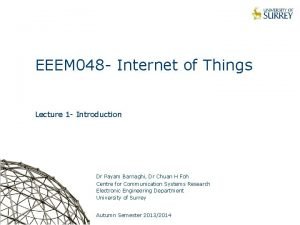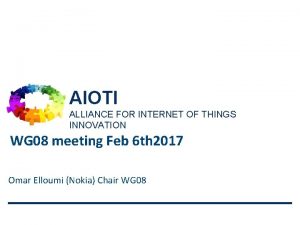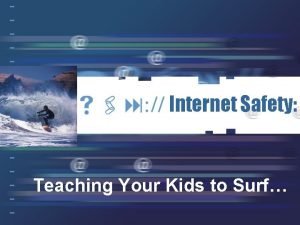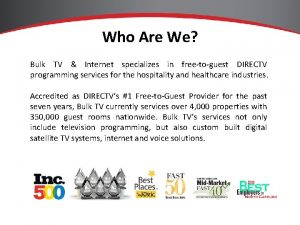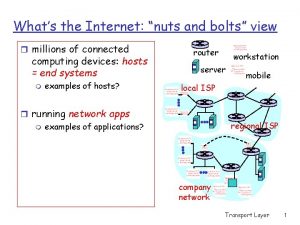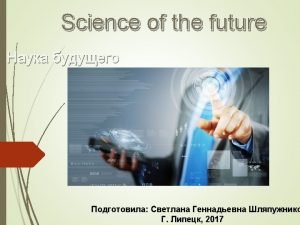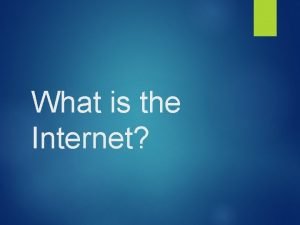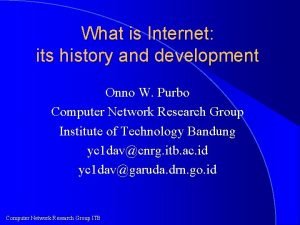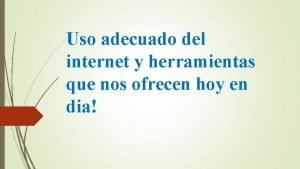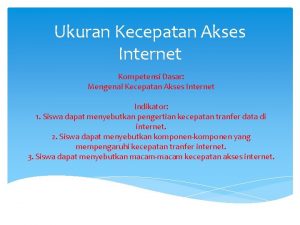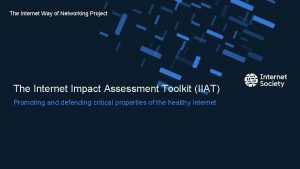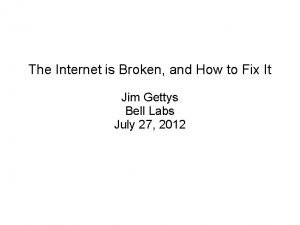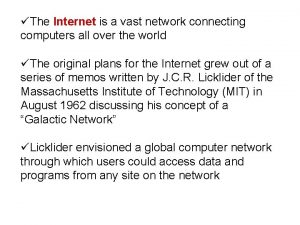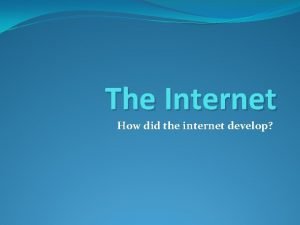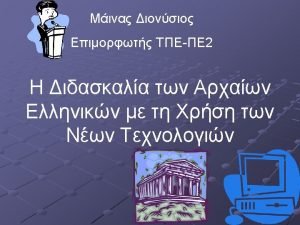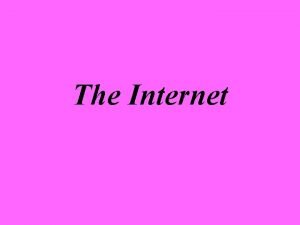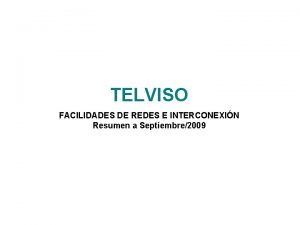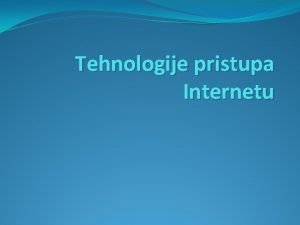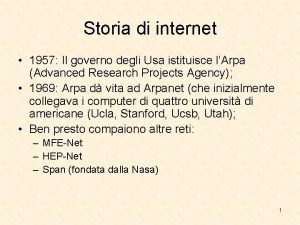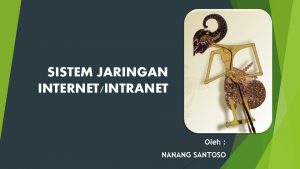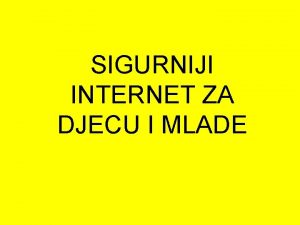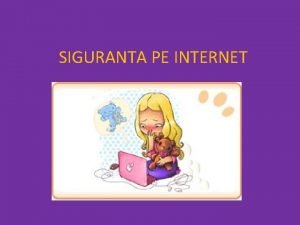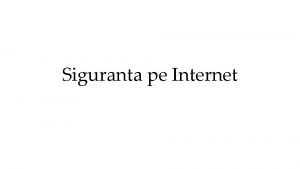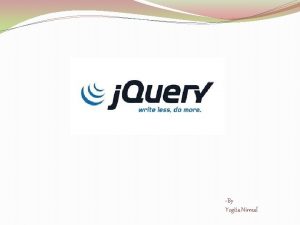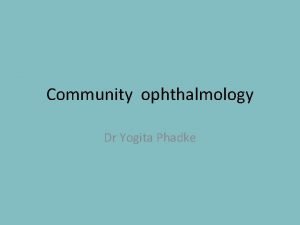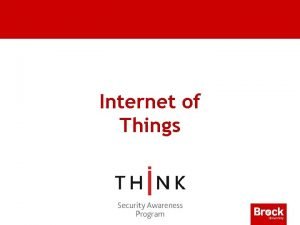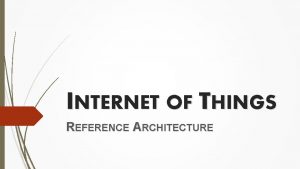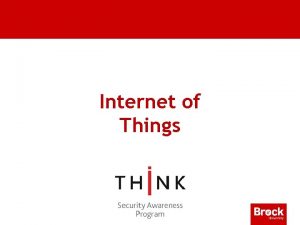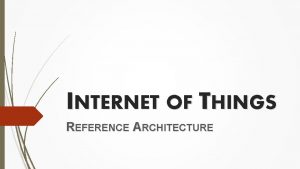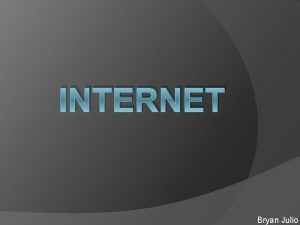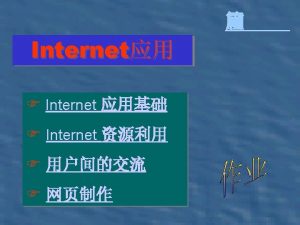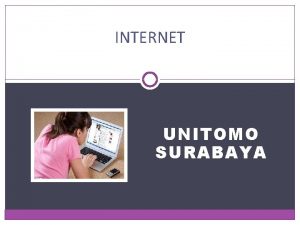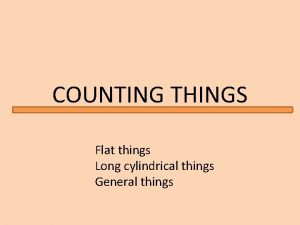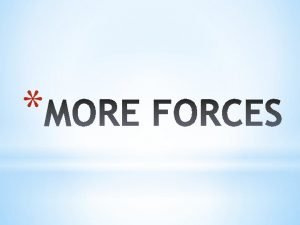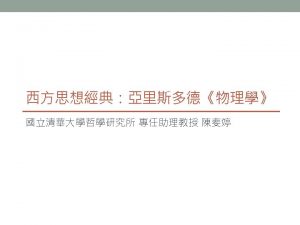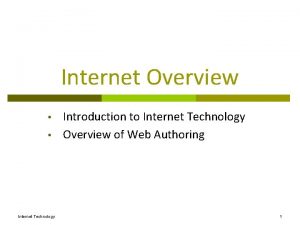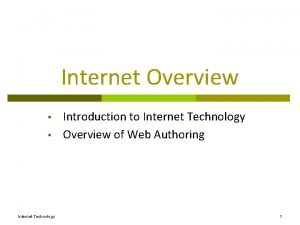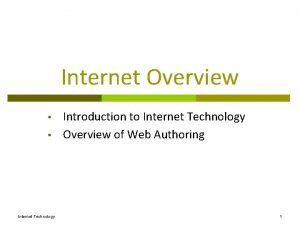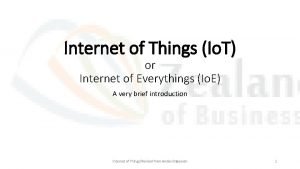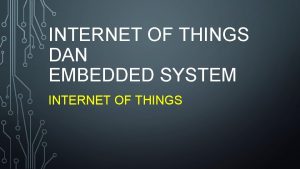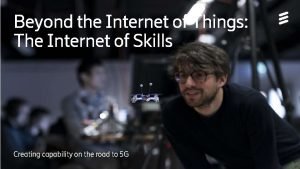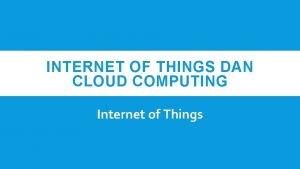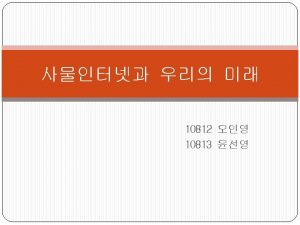Introduction to Io T Internet of Things Yogita


































- Slides: 34

Introduction to Io. T (Internet of Things) Yogita Narule Department Of Computer Engineering International Institute of Information Technology, I²IT www. isquareit. edu. in


Contents • • • Introduction/Overview The Internet of Things Applications of Io. T Challenges and Barriers in Io. T Future of Io. T

Internet Revolution

Internet Usage and Population Statistics

Connected World

Typical Views of the Internet of Things Industrial Automation Smart Home Smart Health Smart City

What is Io. T? • The Internet of Things (Io. T) is the network of physical objects or "things" embedded with electronics, software, sensors, and network connectivity, which enables these objects to collect and exchange data. • Io. T allows objects to be sensed and controlled remotely across existing network infrastructure, creating opportunities for more direct integration between the physical world and computer based systems, and resulting in improved efficiency, accuracy and economic benefit.

Definition Of Io. T The Internet of Things, also called The Internet of Objects, refers to a wireless network between objects, usually the network will be wireless and self configuring, such as household appliances. Wikipedia

Internet of Things refers to the concept that the Internet is no longer just a global network for people to communicate with one another using computers, but it is also a platform for devices to communicate electronically with the world around them. Center for Data and Innovation

The term "Internet of Things" has come to describe a number of technologies and research disciplines that enable the Internet to reach out into the real world of physical objects. Io. T 2008

Things having identities and virtual personalities operating in smart spaces using intelligent interfaces to connect and communicate within social, environmental, and user contexts. Io. T in 2020

The Internet of Things • The term Internet of Things was first used by Kevin Ashton in 1999. • Refers to uniquely identifiable objects (things) and their virtual representations in an Internet like structure

Characteristics Ambient Intelligence Event Driven Internet of Things Semantic Sharing Complex Access Technologies Flexible Structure

Enabling Technologies RFID To identify and track the data of things Sensor To collect and process the data to detect the changes in the physical status of things Smart Tech To enhance the power of the network by devolving processing capabilities to different part of the network. Nano Tech To make the smaller and smaller things have the ability to connect and interact.

The Structure of Io. T The Io. T can be viewed as a gigantic network consisting of networks of devices and computers connected through a series of intermediate technologies where numerous technologies like RFIDs, wireless connections may act as enablers of this connectivity. Ø Tagging Things : Real time item traceability and addressability by RFIDs. Ø Feeling Things : Sensors act as primary devices to collect data from the environment. Ø Shrinking Things : Miniaturization and Nanotechnology has provoked the ability of smaller things to interact and connect within the “things” or “smart devices. ” Ø Thinking Things : Embedded intelligence in devices through sensors has formed the network connection to the Internet. It can make the “things” realizing the intelligent control. 16

Technical Perspective Sensing Layer Communication Layer Management Layer

Applications of Io. T Management Education Io. T Applications Food Retail Logistics Pharmaceuticals

• Management: – Data management – Waste management – Urban planning – Production management –. . .

• Logistics: – Warehouse, management • Inventory control – Port management • ETAs, ETDs • Ships, boats, containers, etc. – Executable code – …

• Retail: – Intelligent shopping – Bar code in retail – Electronic tags – …

• Pharmaceuticals : – Intelligent tags for drugs – Drug usage tracking – Pharma. Product websites > Enable the emergency treatment to be given faster and more correct

• Food: – Control geographical origin – Food production management – Nutrition calculations à Prevent overproduction and shortage à Control food quality, health and safety.

INTERNET OF THINGS

• School Administration – Attendance Management – Voting System – Automatic Feedback Loops • Instructional technology – Media – Infor ma tion management – Foreign language learning

Smart Things Timeline

Challenges and Issues • Issues – Society: People, security, privacy • A policy for people in the Internet of Things: • Legislation – Environmental aspects • Resource efficiency • Pollution and disaster avoidance – Technological • • • Architecture (edge devices, servers, discovery services, security, etc. ) Governance, naming, identity, interfaces Service openness, interoperability Connections of real and virtual world Standards

Challenges and Issues Io. T will inherit the drawbacks of the current internet on an infinitely larger, but more invisible scale – Privacy – will be a huge issue when implementing Io. T – Identity Online Fragmentation of Identity – Efficiency – speed person loses identity and is an IP address – Decisions – do not delegate too much of our decision making and freedom of choice to things and machines – Balancing

Challenges and Issues • Transition to IPv 6 – Internet protocol v 6 • Estalishing a common set of standards between companies, educational systems, and nations. – The same type of cabling, – The same applications or programming – The same protocol or set of rules that will apply to all • Developing energy sources for millions even billions of sensors. – Wind – Solar, – Hydro electric

Technology Roadmap of Io. T

Future of Io. T



Yogita Narule Assistant Professor Dept. of Computer Engg. E mail: yogitan@isquareit. edu. in
 Slideshare io
Slideshare io Internet or internet
Internet or internet Medtech and the internet of medical things
Medtech and the internet of medical things Medical internet of things and big data in healthcare
Medical internet of things and big data in healthcare Apa itu internet of things
Apa itu internet of things Itu internet of things
Itu internet of things Trend internet of things
Trend internet of things Alliance for internet of things innovation
Alliance for internet of things innovation Venn diagram of living and non living things
Venn diagram of living and non living things Sensitivity in life processes
Sensitivity in life processes Internet safety introduction
Internet safety introduction Intro paragraph outline
Intro paragraph outline Essay discussing advantages and disadvantages
Essay discussing advantages and disadvantages Windows internet name service
Windows internet name service Bulk tv and internet
Bulk tv and internet Nuts and bolts of internet
Nuts and bolts of internet The press television and radio
The press television and radio How did the internet start
How did the internet start Akses internet its
Akses internet its Girl scout internet safety pledge
Girl scout internet safety pledge Uso adecuado del internet
Uso adecuado del internet Ukuran kecepatan akses internet menggunakan satuan
Ukuran kecepatan akses internet menggunakan satuan Internet way of networking
Internet way of networking The internet is broken. how fix
The internet is broken. how fix A vast computer network
A vast computer network Forefather of internet
Forefather of internet Classics mit edu
Classics mit edu Characteristics of internet
Characteristics of internet Telviso internet
Telviso internet Tehnologije pristupa internetu
Tehnologije pristupa internetu Internet 1957
Internet 1957 Peta konsep jaringan internet
Peta konsep jaringan internet Sigurniji internet za djecu i mlade
Sigurniji internet za djecu i mlade Reguli de siguranta pe internet
Reguli de siguranta pe internet Reguli de navigare in siguranta pe internet
Reguli de navigare in siguranta pe internet
